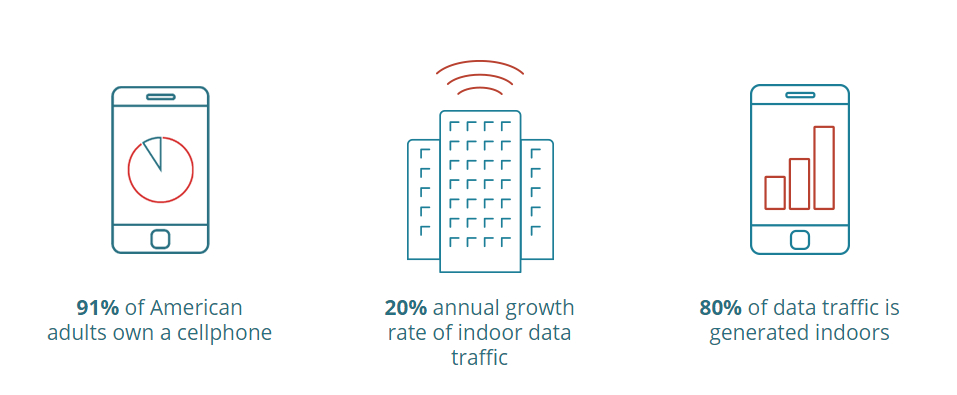« Back to Facilities Management Power & Communication Category Home
3 Ways Distributed Antenna Systems Can Contribute To LEED
May 18, 2016
- Power & Communication

by Andrew Maier
An estimated 40 to 48 percent of new non-residential buildings were green last year, and that number is only expected to rise. There’s a reason — or two or three — why many LEED-certified buildings also have indoor distributed antenna system (DAS) solutions, which provide wireless cellular service for entire buildings. DAS might not be the first thing you think of when you consider going green, but it’ll help you get the most out of your LEED certification development. Here’s why:
1. Low-e Glass Blocks Indoor Cellular Connectivity
Low-emissivity (low-e) glass is common in the windows of LEED-certified buildings because it reduces the transmission of heat. In cold weather it reflects radiant heat back into the building, and in warm weather it reflects solar heat back outside — significantly impacting a building’s energy efficiency.
The problem is that low-e glass also reduces the transmission of cellular signals. So if you install low-e glass as part of your LEED certification construction, your tenants might complain about dropped calls and failed text messages down the line — unless you also install a DAS. It’s the way to be sure your tenants experience seamless connectivity after construction is complete.
2. It’ll Help Boost Your Building’s Value
Even if you don’t install low-e glass as part of your LEED certification build, and even if you don’t currently have a cellular connectivity problem inside your building, chances are you will someday soon. People are using mobile devices more every day, and the increase in data traffic is putting a strain on carrier networks.
Fortunately, DAS solutions provide the reliable coverage and capacity tenants need. If you install a DAS now, you’ll never have to worry that your tenants don’t have the coverage required to support their work or lifestyle. And you’ll never risk losing a prospective tenant because they can’t get a cell signal on the floor you’re renting. There’s great value in peace of mind.
You’ll see the value on your bottom line, too. DAS solutions can have a significant impact on property value — especially if your building is one of the few in your area with the technology. It’s becoming a vital amenity for tenants.
3. It’s Easier to Implement a DAS During New Construction
If you think you might want to install a DAS in your LEED-certified building at some point, it’s easier to go ahead and do it as part of new construction or expansion than installing later. That’s partly because the DAS installation team will be able to work with the construction team and architects to ensure optimal, discreet placement of antennas.
Also, it’s simply easier to install a DAS in a space that isn’t occupied by tenants. Installers can enter the construction zone without fear of disturbing anyone with noise or dust. Alternatively, when DAS solutions are installed in occupied spaces not undergoing renovation, the installation team must work during off-hours and take extra care to clean up dust and debris every day. While these projects can still be completed efficiently, they have a higher level of complexity.
Andrew Maier is vice president of emerging technologies for WIN.








